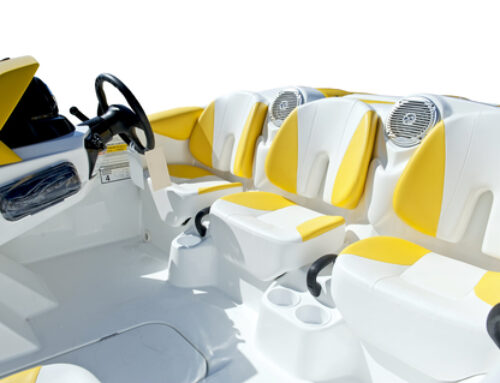Michigan and Illinois sign invasive carp prevention agreement
The governors of Illinois and Michigan have agreed to work jointly to protect the Great Lakes from invasive Asian carp species, as reported by the National Marine Manufacturer’s Association. Gov. Gretchen Whitmer and Gov. JB Pritzker recently announced an intergovernmental agreement between the Illinois Department of Natural Resources (IDNR) and the Michigan Department of Natural Resources (MDNR) which allows Illinois to use up to $8 million in funds appropriated in 2018 by the Michigan Legislature to support the pre-construction engineering and design (PED) phase of the Brandon Road Ecosystem Project.
The State of Illinois also signed a separate PED agreement with the U.S. Army Corps of Engineers for the initial Brandon Road design. The state will serve as the non-federal sponsor, agreeing to help fund design of a portion of the project and to further advance full project design efforts to approximately 30 percent completion. The Brandon Road Lock and Dam in the Chicago Area Waterway System near Joliet, Illinois, is a critical pinch point for keeping bighead, silver and black carp–the invasive Asian carp species of greatest concern–out of the Great Lakes. The Brandon Road project would install layered technologies including an electric barrier, underwater sound, an air bubble curtain and a flushing lock in a newly engineered channel designed to prevent invasive carp movement while allowing barge passage.
The intergovernmental agreement supports the State of Illinois’ role as the non-federal sponsor of the PED phase of this United States Army Corps of Engineers project and outlines a collaboration process allowing MDNR’s input in decision-making regarding the design work. The PED, finalized by both the State of Illinois and the U.S. Army Corps of Engineers on Dec. 29, stipulates Illinois cover 35%, of the projected PED costs. With Michigan’s $8 million financial commitment through the intergovernmental agreement, IDNR will contribute the remaining $2.5 million to complete the project. The funding was made possible by Governor Pritzker’s Rebuild Illinois bipartisan capital plan.
It is predicted that the arrival of live bighead, silver or black carp in the Great Lakes could have drastic effects on the region’s $7 billion fishery, $16 billion boating industry and other tourism-based industries, property owners, recreationalists and others dependent on the Great Lakes and its tributaries. An electric dispersal barrier installed in the waterway near Romeoville, Illinois, in 2002 to prevent invasive species from moving into and out of the Great Lakes has since been supplemented by two additional electric barriers in the same location. A fourth more powerful barrier at the Romeoville site is expected to be operational in 2021.
Once federal funding is secured through the U.S. Army Corps of Engineers Work Plan, the U.S. Army Corps of Engineers anticipates a three- to four-year timeframe for completing the initial Brandon Road design before negotiating a Project Partnership Agreement with the State of Illinois (supported by other Great Lakes States and Provinces) for the initial construction effort and the remainder of project design to reduce the possibility of invasive carp migration into Lake Michigan.
As the Brandon Road project moves forward, current efforts will continue, including the electric barriers near Romeoville and expanded nonstructural measures, including focused commercial fishing, monitoring and prescribed netting to reduce the risk of spawning or of small fish movement through the existing lock and dam.
More information on the Brandon Road Ecosystem Project can be found online at MVR.USACE.Army.mil/GLMRIS-BR.
 TEXTILES.ORG
TEXTILES.ORG 





